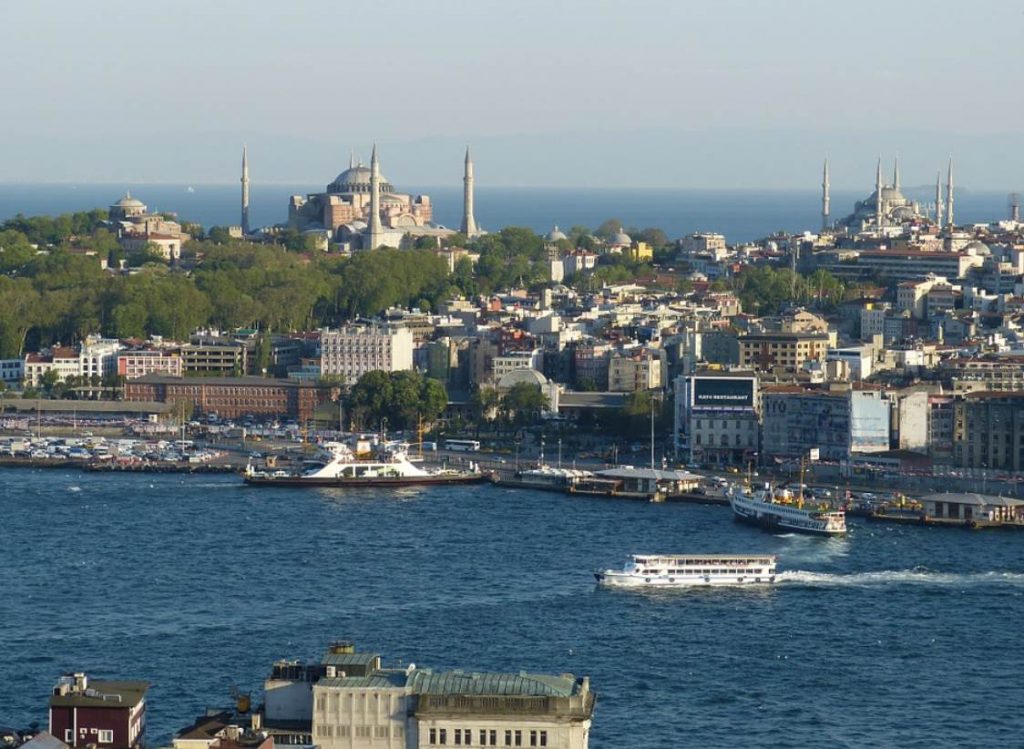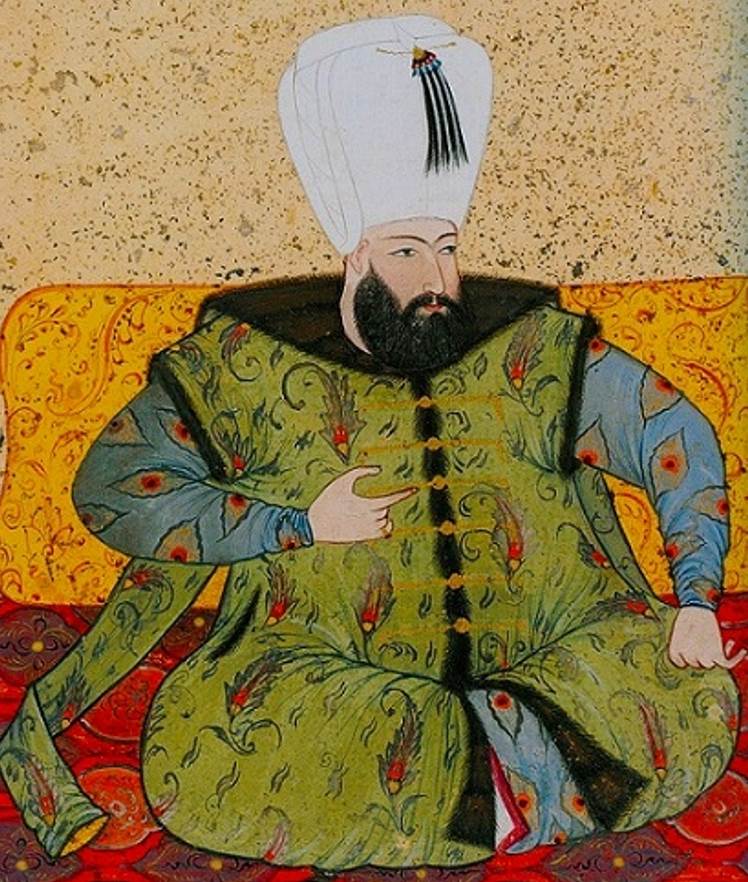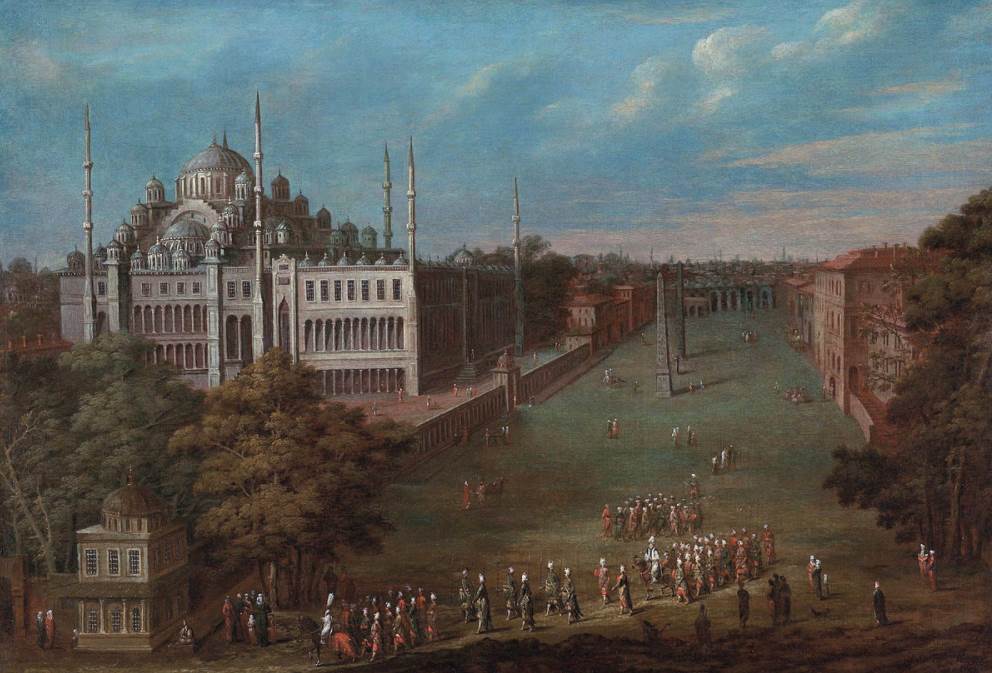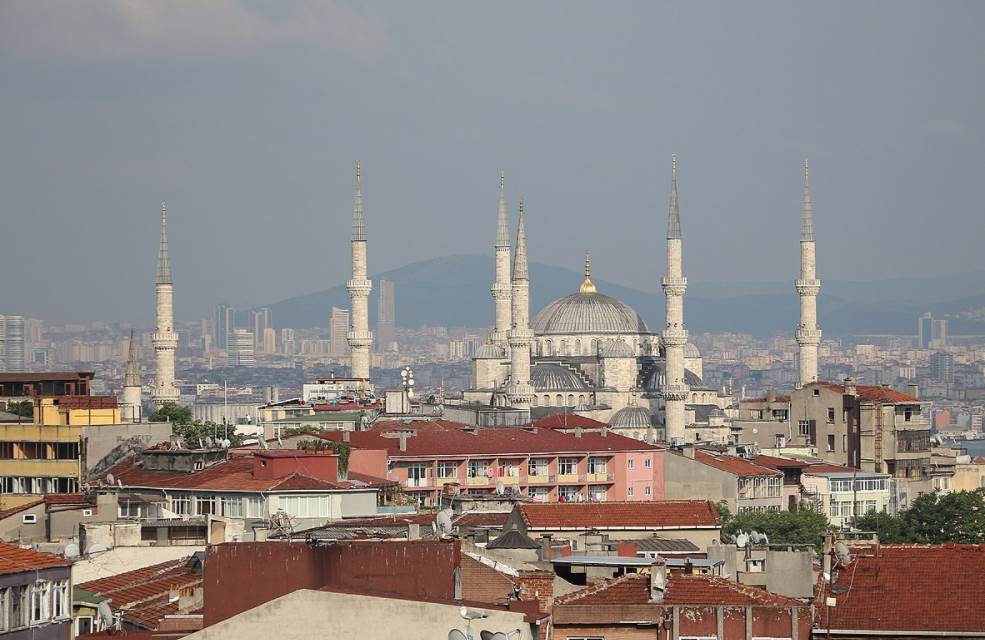What better way to emphasize the power of an empire than to build a huge Islamic structure in a prominent position, right? That’s exactly what the Sultan of the Ottoman Empire thought in the early 17th century.
The result was one of the most amazing mosques ever built which features several astonishing domes. In this article, we’ll take a closer look at some of the most interesting facts about the Blue Mosque, one of the most famous landmarks in Istanbul.
1. It’s located just southwest of the most famous structure in Istanbul
The Blue Mosque is an amazing structure located in the Fatih district of Istanbul, the largest city in Turkey. This is the historical heart of the city that was once known as Byzantium and Constantinople.
It’s located right in front of the historic Hagia Sophia, a structure that has a history dating back to the year 537. It’s located just southwest of both the Topkapi Palace and this ancient building, majestically overlooking the Bosphorus, the natural border between Europe and Asia.
This elevated position was once occupied by the old Grand Palace of the Byzantine emperors and the mosque was built on its foundations.

2. The mosque was built in just 7 years in the early 17th century
The early 17th century was a turbulent time in the Ottoman Empire. There was good news with the Peace Treaty of Zsitvatorok which marked the end of the Fifteen Years’ War against the Habsburg Empire in 1606
There was also very bad news with a devastating loss against the Persian Empire in the Ottoman-Safavid War between 1603 and 1618. The lack of victories was eating away at the ego of Sultan Ahmed I (1590-1617) who commissioned the construction of this magnificent mosque when he was 19 years old in 1609.
This remarkable structure was completed just 7 years later in 1616 but the Sultan wasn’t able to enjoy his building because he died of typhus just 1 year later in 1617.

3. The structure’s main features are 13 domes and 6 minarets
The Blue Mosque looks impressive and that’s not just because it’s located in an elevated position overlooking the Bosphorus. It’s an enormous structure with a length of 73 meters (240 feet) and a width of 65 meters (213 feet).
The main features of the building are the 5 main domes which are accompanied by 8 smaller domes. The main dome is a prominent feature of the architectural design as it reaches a height of 43 meters (141 feet) and a diameter of 23.50 meters (77.1 feet).
The 6 minarets of the building even tower above this incredible dome as they reach a height of 64 meters (210 feet).

4. The interior of the mosque is decorated with 20,000 handmade tiles
While the exterior of the dome is impressive enough, the interior is breathtaking. It’s decorated with about 20,000 handmade tile ceramics that feature over 60 tulip patterns.
Stained glass windows illuminate the lower section of the mosque and verses of the Quran were added by the most renowned Calligrapher of the time, a man named Seyyid Kasim Gubari.
The interior looked even more impressive in the 17th century because the lamps were decorated with gold and gems. These have either been stolen or moved to museums in the city.

5. It’s an active mosque and a popular tourist attraction in Istanbul
The Blue Mosque is part of a UNESCO World Heritage site named the “Historic Areas of Istanbul.” Apart from the mosque and the nearby Hagia Sophia and Topkapi Palace, several other mosques in the Fatih district and the old Walls of Constantinople are part of it too.
The Hagia Sophia used to be the main mosque in the city until the Blue Mosque was completed. It’s still an active mosque today and still holds this status, even though the Hagia Sophia has been reclassified as a mosque recently in 2020.
Today, the mosque is still used for Muslim prayers and is also an important tourist attraction in the city.

More interesting facts about the Blue Mosque
6. The construction of the Blue Mosque was a controversial decision of Sultan Ahmed I. That’s mainly because he didn’t have money from successful wars, the main funding method of most other major structures built in the Ottoman Empire.
Instead, he used money from the empire’s treasury to emphasize his power. This didn’t go over too well with the religious leaders at the time. Because the Sultan died just a year after the mosque was completed, the problem couldn’t escalate further.
7. The official name of the mosque is the “Sultan Ahmed Mosque,” a reference to the man who commissioned its construction. The name “Blue Mosque” is a nickname interference to the blue tiles that decorate its interior and the blue light that shines through its domes.

8. The mosque was not only built on top of the ruins of the Great Palace of Constantinople but is also located on a square that is known today as the Sultanahmet Square.
This square was originally known as the Hippodrome of Constantinople and is sometimes still referred to as the “Hippodrome.” That’s because it used to be a huge stadium for chariot races, similar to the Circus Maximus in Rome.
Some of the monuments that once decorated the central area of this immense stadium still stand on the square today. Some examples are the Walled Obelisk and the Obelisk of Thutmose III.

9. The mosque features a courtyard that is about the same size as the building itself and is surrounded by a vaulted arcade. If you happen to enter the mosque from the western side you’ll notice a large iron chain hanging there.
This chain was hung there on purpose because although Sultan Ahmed was the only person allowed to enter the mosque on horseback, he still had to bow his head to avoid getting knocked off his horse by this chain. This ensured the ruler was still humble in from of the god he worshipped.
10. The Sultan Ahmed Mosque isn’t the only mosque in Turkey that has 6 minarets as there are 5 others, including the Sabancı Mosque in Adana, the Muğdat Mosque in Mersin, and the Çamlıca Mosque in Üsküdar, Istanbul. The latter is the largest mosque in Turkey as well and was only completed in 2019.
There’s an interesting backstory about these minarets because it’s assumed that the sultan initially commissioned “altın minareler” (gold minarets), but the architect understood “altı minare” (six minarets).
This was more than the 4 minarets that were present at Masjid al-Haram, the Great Mosque of Mecca. Because of this, Sultan Murad IV commissioned 3 more minarets to be built in Mecca, bringing the total to 7 at the time.



